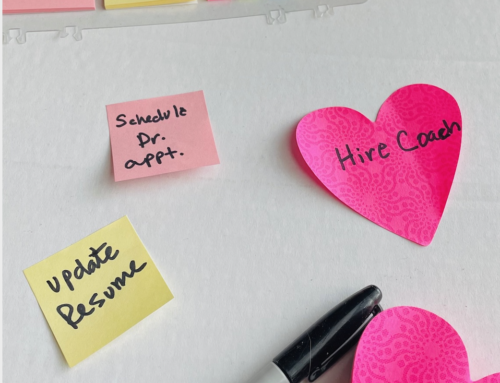
One of the most consistent functions of getting work done is communication. And one important part of communication is how to frame a successful outcome. As a leader —and we are all leaders at times—how do we know whether communication is working? Sometimes things are on track and other times we can’t even find the track. Fortunately, there are structures that work. There are also some that do not.
Think about a meeting where you became aware that the stated goal of the meeting seemed lost. People were having differing opinions—not even related to why the meeting was called in the first place! They are discussing the problem, and why they have it, getting into whose fault it is, and saying things like “that can’t be done because….” Have you been in some variation of that scenario? Whether it’s your meeting or someone else’s, what can you do?
What you can do is gently and persistently shape the conversation. A systematic shift from focusing on what went wrong to what could go right is a powerful tool for resolving issues and opening up possibilities. It can also raise morale and keep the conversation moving forward.
Here’s a thought experiment that illustrates how effective you can be by framing the situation. Think of an interpersonal situation that you’d like to change. Just one thing that you find unproductive or annoying. Got it? Now ask yourself the following questions, exactly as written– no more, no less.
Successful Outcome – First frame:
- What is the problem?
- Why do you have it?
- Who or what is limiting you or preventing you from getting what you want?
Whose fault is it? Listen to the first answer that comes up. Take note of how you’re feeling about that situation at this point.What is your energy level? How do you feel about yourself? About the person or persons involved? What is your level of Motivation? Clarity about the situation? Optimism?
Learn How to Communicate
Get in touch with one of our expert coaches on how to frame a successful outcome and become a better communicator and leader.
Successful Outcome – Second frame:
Consider the same situation through a different frame or set of questions. Use them just as they are written, without changing them at all.
- What is your desired outcome?
- How will you know when you attain it?
- What possibilities might exist based on the current situation?
- What have you learned from the situation so far?
Again, let the answers come. Observe for yourself: What differences do you notice in your energy level? How you feel about yourself? About the others involved? And do you notice a difference in your levels of Motivation? Clarity about the situation? Optimism? Many report dramatic effects when shifting the frame. For one thing, the second frame focuses on the future…where you want to go, not where you’ve been. What else did you notice?
Here’s why:
The effect of changing your “frame” can have varying degrees of impact on your thinking and feelings. How you use your language is the key. Language “affects our bodies and our responses.” I invite you to try the second frame. We call that the AIM FRAME. The first has been referred to by some as the BLAME FRAME. Sometimes you may need to hear what’s going on in the blame frame, defining the problem, and sometimes venting the accompanying feelings. And then, to reach your goal, you must shift to the AIM frame, focusing on what you DO want – not what you don’t want.
What happened when you shifted your frame about your situation? For many, the results can be dramatic, even profound. Their emotions shifted from angry to excited about possibilities, for example. However, some find their energy higher in the first frame, as anger can generate more “steam.”
There is no one correct response here, just an important tip: Language and framing affect our bodies and our responses.
And how we think about a situation drives how we feel, and thus, how we act. To be more influential when you lead, observe how you feel and respond when you explore what you want, rather than staying with what you don’t want. You can ask elegant and leading questions to get people focused back on the meeting’s goal after the problem has been defined. To create a context where everyone can succeed, focus on the goal as in the Aim Frame. If you start asking questions to get the meeting back on track while staying in tune with the other group members, you won’t be the only one who breathes a sigh of relief.
When this kind of thinking and communication become a habit, communication is focused on successful outcomes. When you notice the frame needs to shift, lead the way, and go for what you do want!
From Smart Work: The Syntax Guide to Influence, by Lucy Freedman and Lisa Marshall, 1995, Second edition, HappyAbout Publishers, 2012.
Diane Dean
Diane believes everyone can learn; it’s just a matter of how. She also knows each of us has the internal resources to pursue and reach our desired outcomes. Assisting clients to discover their strengths and hidden resources along with building confidence and courage is Diane’s goal with each person she works with.








Stay In Touch